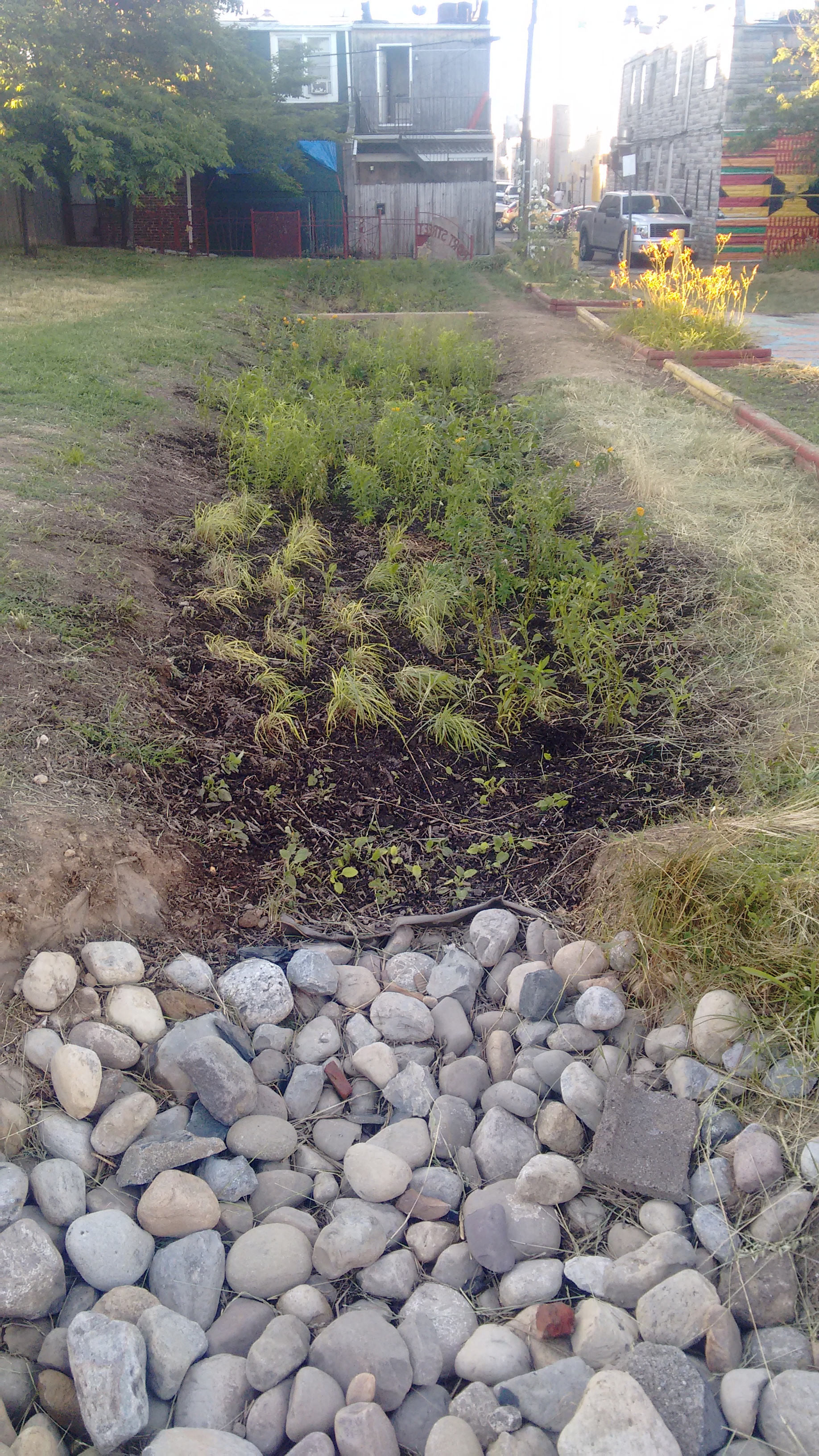
Stormwater runoff is one of the leading contributors to pollution in the Chesapeake Bay. After big storms, the water carries whatever is on the ground and in the streets into our waterways. Impervious surfaces, such as the roads and pavement that cover densely populated areas, don’t allow rain to seep into the ground, causing more polluted stormwater to enter the Bay.
The U.S. Environmental Protection Agency (EPA) wants Maryland to take action on this. By 2019, Baltimore City needs to complete projects that hold twenty percent of the rainwater that falls on the City in place and prevent it from carrying pollution to the harbor. However, these projects can be costly. To help pay for them, the state of Maryland allows local governments to create a stormwater fee in Baltimore City and the nine most urbanized counties in Maryland: Anne Arundel, Baltimore, Carroll, Charles, Frederick, Harford, Howard, Montgomery, and Prince George’s. In Baltimore City, the stormwater fee is based on the amount of impervious surface on the property in question: more paved surfaces means more polluted runoff and a higher fee; more pervious surfaces – or projects like rain gardens or rain barrels that hold rainwater in place – mean less polluted runoff and a smaller fee. That way, those contributing to the problem of polluted runoff the most bear the costs of fixing it. However, other counties in Maryland have chosen not to assess a stormwater fee, meaning that the costs of these projects must come out of general funds.
Whether a county is charging a stormwater fee or not, it is still required to complete restoration projects that meet those EPA requirements. To prove that they can pay for it, each of the ten jurisdictions was required to submit a Financial Assurance Plan (FAP) to the Maryland Department of the Environment (MDE) by July 1, 2016. Some counties, including Baltimore City, did so, but others missed the deadline; many counties submitted plans that fall far short of the funds needed to reduce polluted runoff. Each county and city was also required to hold a public hearing about what is being done to reduce polluted stormwater runoff; some did, but many did not. This lack of public disclosure and accountability is concerning: community members have a right to know what their money is funding, and to know that their counties are meeting EPA requirements for reducing flooding and polluted runoff.
Clean Water Action is standing with the Choose Clean Water Coalition and other environmental groups in submitting comments that outline the concerns we have with the Financial Assurance Plans submitted by local governments. Right now, the MDE has the power to reject flawed plans and require corrected plans that comply with the law. We urge the MDE not to accept plans that fail to prove that funding is available to reduce stormwater pollution by 20%, or plans that have not gone through the required public hearing process. The MDE should evaluate the cost-effectiveness of the proposed restoration plans and financial assurance plans to ensure that local governments are spending their money wisely to achieve the greatest possible reduction in actual stormwater pollution and flooding, rather than relying on trading schemes that don’t reduce the actual volume of stormwater flooding our streets, storm drains, and streams – for example, by relying on claiming credit for unused capacity at wastewater treatment plants to excuse a lack of restoration projects.
Polluted runoff is the only growing source of pollution in the Chesapeake Bay, and local governments’ Financial Assurance Plans should demonstrate their commitment and financial ability to build restoration projects that will reduce it. Clean Water Action will continue to push for the MDE to reject inadequate plans and require real pollution reductions that will help to restore the Bay.



